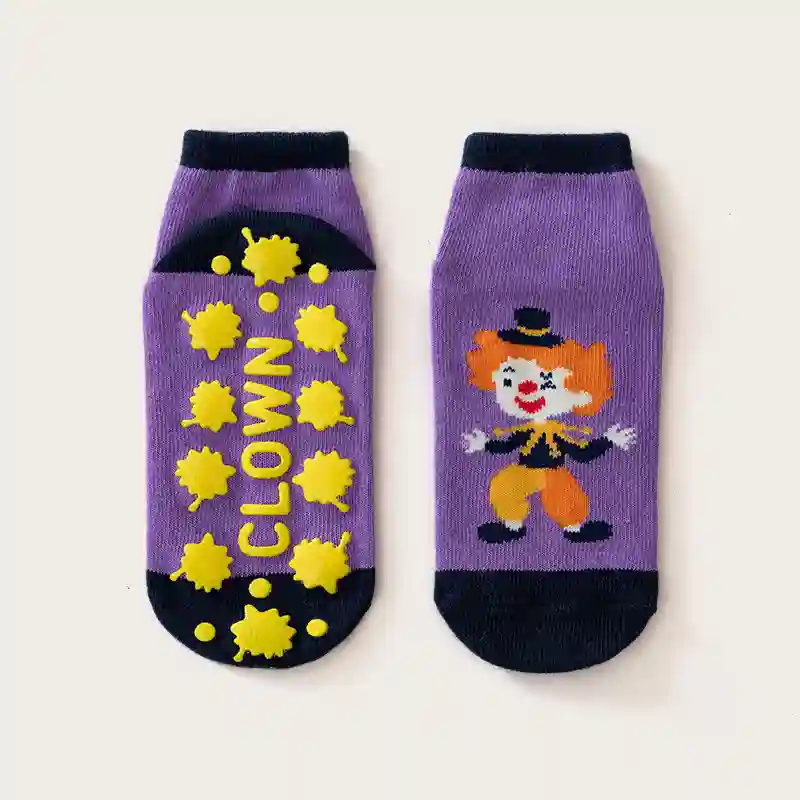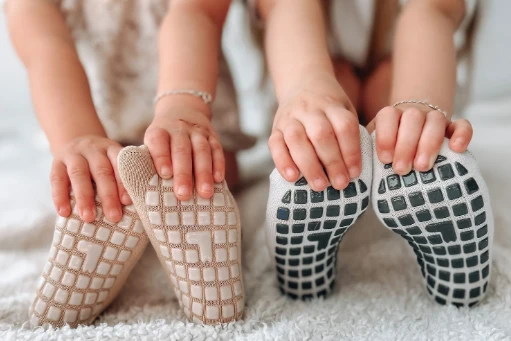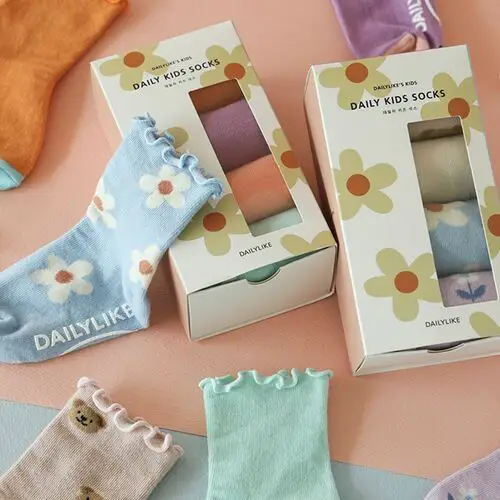Introduction: The Strategic Opportunity in Premium Baby Grip Socks

The infant and toddler apparel market has experienced significant evolution in recent years, with increasing emphasis on products that combine functional benefits with premium positioning and brand differentiation. Baby grip socks represent a particularly attractive category within this context, offering manufacturers and retailers a compelling opportunity to address growing parental demand for products that enhance safety during early mobility development while providing distinctive design elements that support premium pricing. These specialized socks, featuring strategic grip patterns on the sole to prevent slipping during crawling and early walking stages, have transitioned from niche products to mainstream essentials in many markets, with corresponding opportunities for manufacturers, distributors, and retailers positioned to meet this demand with superior offerings. For product development teams, merchandising specialists, and business development professionals in the juvenile products industry, understanding the complete ecosystem of baby grip sock production and distribution – from material selection and manufacturing considerations to channel strategy and retail merchandising – can unlock substantial business value. This comprehensive guide examines the strategic considerations in developing, manufacturing, and distributing premium baby grip socks, providing actionable frameworks for market assessment, production optimization, and distribution strategies that maximize both market penetration and profit margins. Whether you’re an established juvenile products manufacturer seeking to expand your product portfolio, a specialized sock producer exploring the baby segment, or a retailer developing private label offerings, this analysis provides the business intelligence necessary for successful market entry and expansion in this growing product category.
Market Analysis: Understanding the Baby Grip Sock Segment
The baby grip sock segment is no longer a niche. As more parents prioritize safety, comfort, and aesthetics for early walkers, this product has become a staple in many baby wardrobes. For manufacturers and retailers, a clear market view is essential before committing to design, production, or inventory.
Consumer Segments and Buying Behavior
There are three main buyer groups:
- Safety-Driven Parents (45–55%)
These buyers focus on non-slip function. They care about certifications and durability, but still expect reasonable pricing. - Style-Conscious Shoppers (25–35%)
This group values design, packaging, and brand image. Often buying as gifts, they’re less price-sensitive and open to premium pricing. - Budget-Oriented Consumers (15–20%)
These parents look for solid function at lower costs. Multi-packs and value sizing are key for them.
Purchase behavior follows clear phases:
- First-time buys happen in late pregnancy or early infancy
- Repeat purchases follow growth cycles
- Gift purchases spike near baby showers and holidays
Tiered product lines often work best—offering both functional basics and gift-ready options can cover more ground without diluting your brand.
Competitive Overview
The market features three layers:
- Premium brands: Focused on design and organic materials; retail at $12–20 per pair or $25–45 for sets
- Mid-range labels: Babywear brands selling at $8–15 per pair or $20–30 per set
- Value products: Mass-market socks priced at $5–10 per pair or $15–25 for sets
Private label demand is rising. Retailers want custom-branded socks that deliver margins while meeting quality benchmarks. This opens doors for factories offering flexible MOQs, design customization, and consistent quality.
To compete, manufacturers should avoid copycat offerings. Instead, find market gaps in material quality, functional innovation, or packaging appeal.
Product Development: Engineering for Safety and Differentiation
Developing premium baby grip socks requires more than basic functionality. Buyers expect both safety performance and visual appeal. For factories and brands, the key is to align grip technology with scalable design and production strategies.
Grip Safety and Manufacturing Choices
Grip pattern layout directly impacts both slip prevention and production cost. Simple repetitive dots are easier to produce. In contrast, anatomical grip layouts follow foot pressure zones, offering better traction but increasing mold complexity and cost.
Silicone remains the most reliable grip material. Medical-grade options offer durability but can cost 30–50% more than standard types. PVC is cheaper but less durable and often rejected by eco-conscious buyers. Procurement teams should also consider grip density. More silicone means better safety—but at a trade-off with sock flexibility and price.
Real-world testing with infants is critical. Lab slip tests only tell part of the story. Top-performing programs combine lab data with baby movement trials to ensure reliable grip across crawling and first steps. Third-party safety certification also adds credibility—especially when selling through regulated channels or to premium retailers.
Design, Aesthetics, and Packaging Strategy
Parents buy with their eyes. Soft pastels, neutral tones, and bold gender-neutral patterns are all in demand. Character licensing offers quick market differentiation, but comes at a cost—usually 8–15% of wholesale. For brands with tighter budgets, custom illustrations or minimalist aesthetics offer unique alternatives.
Packaging matters, especially for gifting. Clear display boxes or reusable pouches help brands stand out. Premium packaging can support 15–30% higher retail prices.
Size strategy affects inventory and shelf space. Most brands offer 3–5 sizes covering 0–24 months. Stretch-based visual designs that change as the sock expands offer a smart feature parents notice.
With the right mix of safety, design, and efficient production, baby grip socks become more than apparel—they become a category driver.
Manufacturing Considerations: Ensuring Quality and Efficiency
Producing baby grip socks at scale requires balancing quality, safety, and cost. Below is what manufacturers should focus on to stay competitive.
Material Selection: Comfort vs. Durability

Choosing the right yarn mix is critical. Cotton-rich blends (70–85%) offer softness and breathability, ideal for sensitive skin. Synthetic blends (polyester/nylon) improve durability and cost-efficiency but can reduce softness. Premium options like organic cotton or bamboo increase material cost by up to 40%, but help with high-end positioning.
Elastic fibers (elastane) affect fit and shape retention. Higher-grade elastane lasts longer but raises cost. Aim for 160–200 GSM for balanced thickness and stretch. Always check for Oeko-Tex certification, especially when targeting health-conscious parents.
Testing matters: confirm shrinkage rate, colorfastness, and grip performance after at least 30 washes. Poor retention means lower re-purchase and returns.
Production Methods: Matching Equipment to Market
Basic circular knitting machines work for simple, one-size-fits-all models. But if aiming for left/right foot shaping or advanced cushioning, consider computerized knitting machines. They support better fit and customization—but require higher capital investment.
For grips, screen-printing is affordable but wears down fast. Silicone injection offers better adhesion and durability, suited for premium products. Whichever method you use, ensure the grip placement is safe and effective.
Scaling Up: Plan for Growth
Domestic production enables faster turnaround and easier quality control—but costs more (30–50%). Offshore production reduces price but may raise risks. Many brands use a hybrid strategy: test in small batches locally, then scale core styles offshore.
As orders grow, invest in QC systems to ensure product consistency. Set up detailed spec sheets and retain control of key inputs like yarn and grip compound.
Distribution Strategy: Optimizing Channel Selection and Management
Choosing the right sales channels is key to expanding baby grip sock sales without hurting brand value or margins. Not all retailers are a good fit—your strategy should reflect your product’s price point, design, and production capacity.
Where to Sell
Specialty baby stores are great for premium positioning. Staff are trained to explain benefits, and shoppers often buy gifts or value quality. But expect high margin demands (50–60%) and smaller orders. You’ll also need to offer support like fast restocking and marketing materials.
Department stores bring higher foot traffic and access to baby registries. While they also require similar margins, their product presentation may be less focused. Mass retailers can move volume but prioritize low prices, expect margins around 40–50%, and require complex compliance like packaging specs and EDI systems.
Online channels split into two paths: direct-to-consumer (more control, lower volumes) and third-party platforms (more reach, tighter margins). Digital retailers expect detailed content, fast fulfillment, and consistency.
Start with 1–2 aligned channels first. Expand only when production, pricing, and service systems can support it. And to avoid channel conflict, use different product bundles, pricing tiers, or SKUs for each sales path.
Support That Drives Sell-Through
Getting on shelves isn’t enough—retailers need help selling. Offer sales kits with product specs, comparison charts, and development benefits. Create shelf displays, size sorting tools, and grip-test samples to improve visibility and interaction.
Provide digital assets—photos, video demos, and bulletproof product data. Most online sellers now expect full content libraries.
Finally, help manage stock. Recommend size distributions for first orders, track sell-through, and offer easy reorder programs. Retailers that see your brand as a reliable partner—not just a vendor—will give you more shelf space and marketing support.
Pricing Strategy: Maximizing Value and Margins
Pricing baby grip socks requires more than adding markup. It’s about aligning costs, margins, and positioning—while keeping your channel partners profitable.
Understanding Your Costs
Start with a full breakdown. Direct production usually takes 30–45% of the wholesale price. Add in development (3–8%), packaging (5–10%), logistics (5–8%), sales commissions (5–10%), and brand marketing (5–15%). These add up fast. That’s your baseline.
From there, you need to meet retailer expectations. Specialty stores often want 50–60% retail margins. Big-box chains accept 40–50% but expect promo support. Online platforms take 15–30% plus ad costs. Price too low, you lose money. Too high, you lose shelf space.
Multi-channel brands can use tactics like:
- Different bundles or packaging by channel
- Feature variation (basic vs. deluxe grip versions)
- Exclusive designs for select partners
These strategies reduce price conflicts and support each partner’s pricing needs.
Supporting the Price with Perceived Value
Consumers won’t pay more unless they see the value. For baby grip socks, that value starts with safety—grip placement, slip prevention, and mobility support. Add child development benefits and premium design, and you’ve got a compelling offer.
Packaging matters too. Use window boxes to highlight patterns. Add reusable bags or gift-ready wraps to justify higher prices. Visual storytelling sells, especially for gift buyers.
If you use higher-end materials, let it show. Call out organic cotton, recycled yarns, or OEKO-TEX certification. These details matter to today’s parents.
Retailers benefit when brands offer tiered pricing—basic, mid, and premium lines—so they can serve more customer types without adding more suppliers.
Smart pricing means finding the right floor, ceiling, and story to match. Done right, it creates better margins for you, confidence for retailers, and satisfaction for parents.
Marketing Support: Driving Awareness and Differentiation
To stand out in a crowded baby product market, manufacturers must provide strong marketing support. Both consumer and trade-focused efforts are essential to build trust, drive sales, and support retail partnerships.
Reaching Today’s Parents
New parents spend hours researching what’s safe, useful, and stylish for their babies. This makes digital channels key. Instagram and Facebook are top platforms for reaching parents, especially those shopping for baby showers or adding items to gift registries. Manufacturers should supply branded content that shows socks in action—helping babies crawl, stand, and walk with confidence.
Short videos, relatable parenting tips, and real-life use photos build engagement. Influencer partnerships, especially with micro-influencers (10K–50K followers), often convert better than big celebrity campaigns. For brands with more resources, parenting magazines and pediatric office placements still hold value, especially when combined with digital retargeting strategies.
Supporting Retail Partners
Retailers need more than just a product—they need reasons to recommend it. That starts with education. Staff training tools, short explainer videos, and comparison charts help frontline workers explain the benefits clearly.
Point-of-sale materials like size guides and feature cards boost conversion. Co-branded ads, in-store displays, or digital campaign cost-sharing can make key retailers feel like true partners. For higher-performing stores, rewards like exclusive designs or early product access are proven motivators.
Trade shows still matter. Demos showing grip function or category sales data that highlight profit potential help retailers buy with confidence.
Strong marketing support makes the difference between stocking shelves and moving product. Brands that invest in both consumer awareness and retail enablement earn more space, more attention, and more long-term success.
Inventory Management: Optimizing Stock Levels and Cash Flow
Poor inventory control ties up capital and leaves retailers with stockouts or deadstock. In the baby grip sock category—where sizes, colors, and seasonal shifts all matter—inventory must be tightly managed to support profit goals without overextending cash.
Forecasting and Stock Planning
Forecasting starts with sales history, but shouldn’t end there. Promotions, retail expansion, and seasonal spikes (especially Q4) must all feed into planning models. Most brands see peak sales in fall and winter—up to 30% higher than average. Size breakdowns also follow a typical curve, with mid-sizes (6–12 months) making up about 40% of sales. Smaller and larger sizes tend to split the rest.
Lead times usually range from 60 to 90 days. To reduce overstock, brands often keep raw inventory semi-finished—dyed but not packaged—allowing final customization based on actual orders. This keeps options open while avoiding excess risk.
Retail Replenishment and Sell-Through Support
Retailers often struggle with size curve accuracy, especially if they don’t specialize in babywear. Manufacturers can help by providing smart initial size packs tailored to store demographics. Ongoing replenishment is key—whether it’s manual reorders, auto-refill systems tied to POS data, or full vendor-managed inventory (VMI) setups.
For seasonal or trend-based SKUs, markdown planning and rebalancing slow sellers across stores help avoid heavy discounting. Some suppliers offer inventory guarantees or style swaps to reduce risk and keep retailers engaged.
In tight supply conditions, managing allocation fairly keeps key accounts satisfied and relationships intact.
Strong inventory systems don’t just protect working capital—they help brands deliver on time, keep shelves stocked, and maintain retailer trust. This makes inventory a profit lever, not a cost burden.
Quality Assurance: Ensuring Safety and Performance
For manufacturers of baby grip socks, robust quality assurance is essential to protect brand reputation and minimize liability risks. A comprehensive quality program addresses both regulatory compliance and consistent product performance.
Safety Compliance
Baby products face strict safety regulations globally. Grip socks must prevent hazards such as choking risks from detached grip dots and comply with limits on harmful chemicals like lead. They also need to meet flammability standards and follow labeling requirements covering fiber content, care, and origin. Certifications like Oeko-Tex Standard 100 confirm chemical safety. Claims related to slip resistance or developmental benefits must be backed by test data to comply with consumer protection laws. Navigating varying requirements across markets (US, EU, Canada, Australia) often involves third-party labs or compliance experts. Although this adds 3-5% to costs, a clear compliance plan prevents market restrictions and legal issues while strengthening safety credibility.
Quality Control and Testing
Beyond compliance, consistent product quality builds consumer trust and reduces returns. Testing raw materials—especially grip adhesion—is vital. Production must include regular inspections, sampling, and final quality checks. Durability tests, like wash cycles, ensure grip effectiveness remains above 80% after 15–20 washes, matching typical usage. Factory audits maintain uniform standards across outsourced sites. Traceability linking batches to products allows quick response to any quality concerns. Performance testing combines lab slip-resistance metrics with real-life trials involving crawling and walking infants, confirming practical effectiveness.
A strong quality assurance system balances safety, durability, and performance. This foundation supports customer satisfaction, reduces risks, and helps brands succeed long term.
Conclusion: Strategic Positioning in the Baby Grip Sock Market
Success in the baby grip sock market requires strategic alignment of product development, manufacturing capabilities, and distribution approaches with specific target market segments. Manufacturers must make deliberate choices regarding quality levels, design differentiation, and channel strategy based on their operational strengths and market opportunities rather than attempting to serve all segments equally. Those targeting premium positioning must invest in superior materials, distinctive designs, and comprehensive quality assurance that supports higher price points while delivering meaningful performance advantages. Manufacturers focusing on mid-market opportunities should develop efficient production processes and strategic retail partnerships that balance quality expectations with competitive pricing requirements. For those pursuing volume opportunities through mass market channels, production efficiency and consistent quality at accessible price points become paramount considerations.

Regardless of specific market focus, understanding the unique requirements of the baby grip sock category provides the foundation for sustainable success in this growing product segment. Implementing appropriate quality standards, developing distinctive designs that balance aesthetics with functionality, and creating comprehensive marketing support programs that effectively communicate product benefits enables manufacturers to deliver products that meet the needs of both parents and retailers while building profitable business relationships throughout the juvenile products ecosystem.
FAQ: Common Questions About Baby Grip Sock Manufacturing
What are the typical minimum order quantities for baby grip sock production?
Minimum orders vary: domestic factories often require 300-500 pairs, offshore 1,000-2,500 pairs, and fully custom designs 3,000-5,000+. Established brands may negotiate lower minimums, though smaller orders usually incur 15-30% higher costs due to reduced volume discounts.
How do production costs compare between domestic and offshore manufacturing for baby grip socks?
Domestic production costs 30-50% more than offshore, with prices around $2.50–$4.00 domestically vs. $1.50–$2.50 offshore. Domestic offers shorter lead times (4-6 weeks), lower minimums, easier communication, and tighter quality control, beneficial for brands needing flexibility despite the higher cost.
What testing standards are most relevant for baby grip sock manufacturers?
Key standards include ASTM F963 for small parts safety, 16 CFR Part 1610 for flammability, CPSIA Section 101 for lead limits, ASTM D2654 and D3107 for durability and stretch, plus ASTM D1894 for slip resistance. Oeko-Tex Standard 100 verifies chemical safety for infant products.
How should manufacturers determine appropriate size ranges and size breaks for baby grip sock lines?
Typically, 3-5 sizes cover 0-24 months, split by age groups (0-6, 6-12, 12-24 months) or shoe size stages. Size specs include foot length, circumference, ankle, and leg height, ensuring fit accuracy while limiting excessive size variants to simplify production.
What are the most effective retail merchandising strategies for baby grip socks?
Use vertical displays sorted by size with clear labels, highlight safety and development benefits on signage, offer unpackaged samples for tactile experience, bundle with related baby products, and position items in hosiery and early mobility sections. Cross-merchandising near baby registry areas boosts gift registry inclusion.
